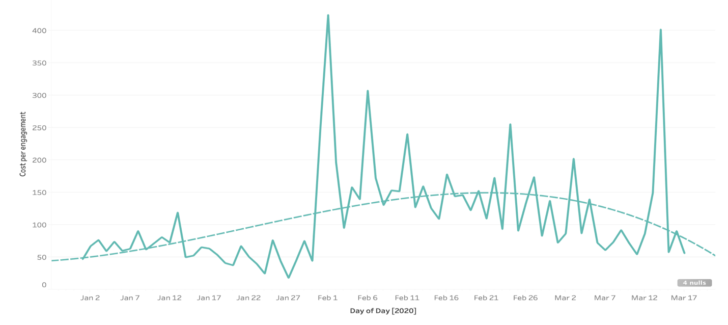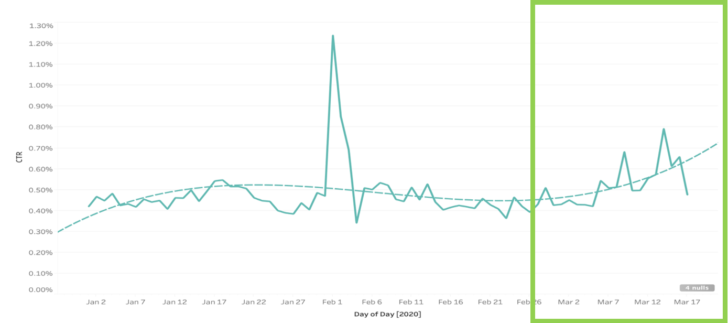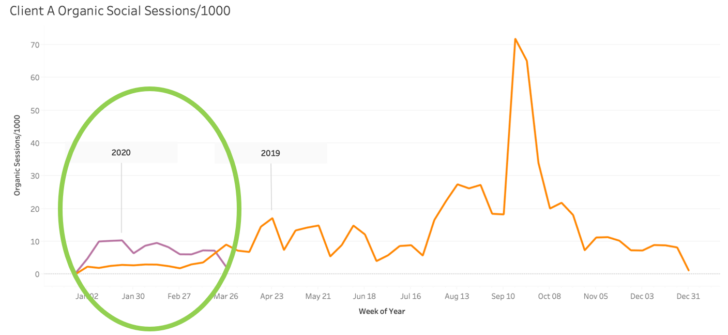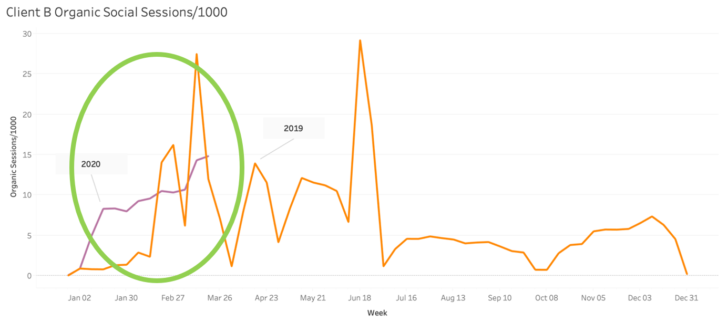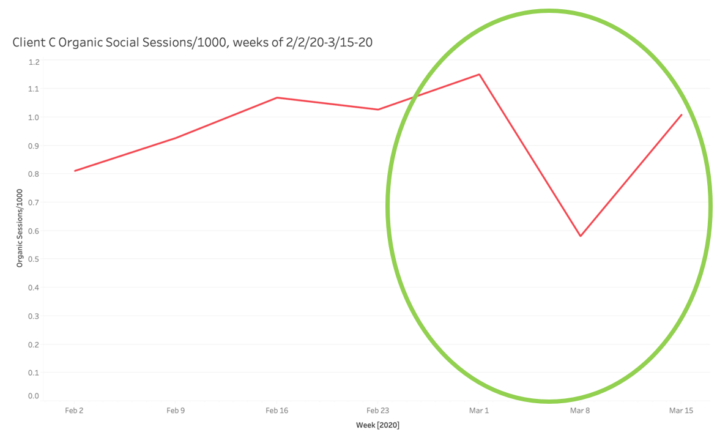Maximizing efficiency for ecommerce paid campaigns

30-second summary:
- SEOs must improve the efficiency of ecommerce shopping ad campaigns to meet consumer expectations of a hassle-free online experience
- Brands need to invest time, gather experience, and implement various new strategies to maximize their performance as the digital space is growing and evolving at a rapid pace
- Setting up something like a Google Shopping Campaign may not be an uphill task; however, you need to implement smart strategies to make it more effective
- The valuable tactics mentioned in this post will help you boost your ecommerce sales and get you started on the right track
We are witnessing a significant increase in digital ad spending across the globe. The pandemic has resulted in consumer behavior changes that have led to a new era of ecommerce. The majority of people around the world have increased their reliance on online shopping and brands have been investing more money and attention in direct-to-consumer activity.
According to a report by Oberlo, digital advertising spend in 2022 grew by 15.6 percent from 2021. The report further states that digital ad growth shows no signs of stopping and the growth is expected to continue for the next few years.
If you are running a business that sells products, you should absolutely embrace ecommerce to drive its growth. However, while neglecting ecommerce is not an option, there are numerous other brands online that could be fierce competition for your products, so it is important for you to enhance your strategy to remain both relevant and visible.
Important things to consider before starting a campaign
Ensure that your website is SEO-friendly (search engine optimized) and has a user-friendly design. A well-structured ecommerce website can help you achieve the kind of results you are looking for.
It is extremely crucial to create an ad that resonates with your potential customers. You should create a detailed customer persona with the following steps.
- Decide who your target audience is. Are you targeting young men who like outdoor activities? Middle-aged mothers? Adults with aging parents?
- Once you determine your target audience, you should understand what they are looking for. Analyze their requirements and try to find out their interests. What hobbies or goals might your target audience have? What interferes with their ability to do these things?
- Turn these obstacles – these pain points – into your guidestones and try to address the problems that they pose.
How to maximize efficiency for your ecommerce paid campaigns
If you are looking to establish sustainable positive brand awareness online and improve your revenues from online sources, it’s critical to fine-tuning your online strategy.
Here is a list of key tactics that you must employ in order to achieve optimum results. While we will be specifically speaking about Google ads, many of these tactics are broadly applicable across any paid advertising service you use.
Optimize the product data feed
- The data in your Google Product Feed determines your campaign performance, which seriously impacts your ROI. Therefore, optimization is key.
- Make sure that the title is simple so that your audience can understand everything they need to know about your product just by reading it. Such titles can also help you gain maximum visibility on search engines like Google.
- Instead of the Google Product Feed, if you prefer using a spreadsheet, make sure that you include all possible information about the product such as color, size, material, the age range of potential customers, and so on.
- Select the right product categories and subcategories and align them with the appropriate product types. Failing to do this can seriously hurt your sales.
- A quality Product Feed Management tool helps you track your performance, which is crucial, as you can make the necessary adjustments to your ad campaigns based on your performance.
Fine-tune your campaign by using negative keywords
- Nothing is perfect in this world, and that includes the Google Shopping system as well. Even though Google Shopping listings are a boon for marketers, imperfect keyword targeting is a big issue as search results can sometimes display your products with irrelevant search keywords. For instance, if you sell running shoes, but not other running accessories, you don’t want your ads coming up for shoppers who won’t purchase.
- If you’re showing up for these keywords that won’t generate buys, your ad campaigns could experience high spending but terrible conversion ratios, low click-through rates, and low ROIs and ROAS.
- Implementing a negative keywords strategy in your Google Shopping ad campaigns can prevent your ads from showing up when certain search phrases are used. This in turn can boost the campaigns’ ROAS and ROI.
- Using negative keywords in your ad campaigns can prevent unwanted clicks, thereby helping you save money by improving the click rate of your advertisement.
Highlight your sales, discounts, and special offers
- Every customer loves a great offer as they are getting an opportunity to save while purchasing something.
- If you want to move your products quickly, showcasing discounts and special offers is a great way to achieve that. While running special offers and deals, you need to specifically mention that, and if you really want to stand out in the field, you should run ads regarding these offers and deals.
Use Single Product Ad Groups
- Single Product Ad Groups (SPAGs) enable marketers to set bids for each product individually. An SPAG allows you to pause individual products that aren’t giving you the expected results. SPAGs also give you the option to create negative keywords for specific products.
- An SPAG allows you to identify your best-selling products and least-selling products, which will help you to group them into performing and non-performing categories accordingly.
- An SPAG is a very useful tool, as it allows you to make modifications at the product level and create keywords for your product and control the bids at the market level.
Try Google Showcase Ads
- Google Showcase Ads feature product images and prices directly on the results page. These ads expand when clicked and display a custom description of the product and a catalog of related products. These ads allow you to group together related products and present them together to introduce your brand or business.
- Google Showcase Ads can improve your sales performance and efficiency of your paid campaigns as they allow you to highlight your products using high-quality digital images. You will be able to see them at the top of the SERP (search engine results page), above the paid search ads.
Create a good post-purchase experience
- Considering the fierce competition from other brands and competitors online, it is very important to encourage repeat purchases, as they are often much less expensive than converting first-time shoppers.
- A strong check-out experience and post-purchase considerations will help build strong customer loyalty which will make second and third purchases more likely.
- Use customer data wisely once it is acquired. This will improve your customer retention rate. You can group your customers based on how much they have purchased and how many times they have purchased. You can then provide exclusive discounts and offers to your loyal customers accordingly.
Important points to remember while creating an ecommerce website
Here are a few key points that you must consider while creating an ecommerce website.
- Ensure that your website is mobile-friendly. Many users use mobile devices for online searches, in fact, most online searches are executed on mobile devices. Making your site mobile user-friendly ensures that customers will be able to navigate your site on their mobile devices seamlessly.
- Different users prefer different payment methods. Therefore, it is important to offer multiple payment options, as customers may cancel the purchase if they don’t find their preferred payment option on your ecommerce website. For instance, you could offer a normal credit card payment option, as well as PayPal or Google Pay.
- Keep the sales process simple. Even customers who are not computer or mobile-savvy should be able to complete their purchase without trouble. A simple and straightforward experience can give your customers an effortless and seamless experience while purchasing.
Final thoughts
It is important for every brand to put the time in to ensure that they stand out and speak to their audience. Try to identify the ways in which you can keep your audience engaged as it can help in driving greater data capture and increase brand loyalty.
The strategies mentioned in this post can help you improve the efficiency of your ad campaigns, and implementing them correctly will pay off handsomely in the long run.
Andy Beohar is VP of SevenAtoms, a Google and HubSpot certified agency in San Francisco. Andy develops and manages ROI-positive inbound and paid marketing campaigns for B2B & Tech companies. Connect with Andy on LinkedIn or Twitter.
Subscribe to the Search Engine Watch newsletter for insights on SEO, the search landscape, search marketing, digital marketing, leadership, podcasts, and more.
Join the conversation with us on LinkedIn and Twitter.
The post Maximizing efficiency for ecommerce paid campaigns appeared first on Search Engine Watch.
https://www.searchenginewatch.com/2022/09/07/maximizing-efficiency-for-ecommerce-paid-campaigns/





 Q. Paid ads have their own cons like reduced page reach, how do you maintain an upward graph for organic page reach and boost relationships, engagement, and direct sales?
Q. Paid ads have their own cons like reduced page reach, how do you maintain an upward graph for organic page reach and boost relationships, engagement, and direct sales?